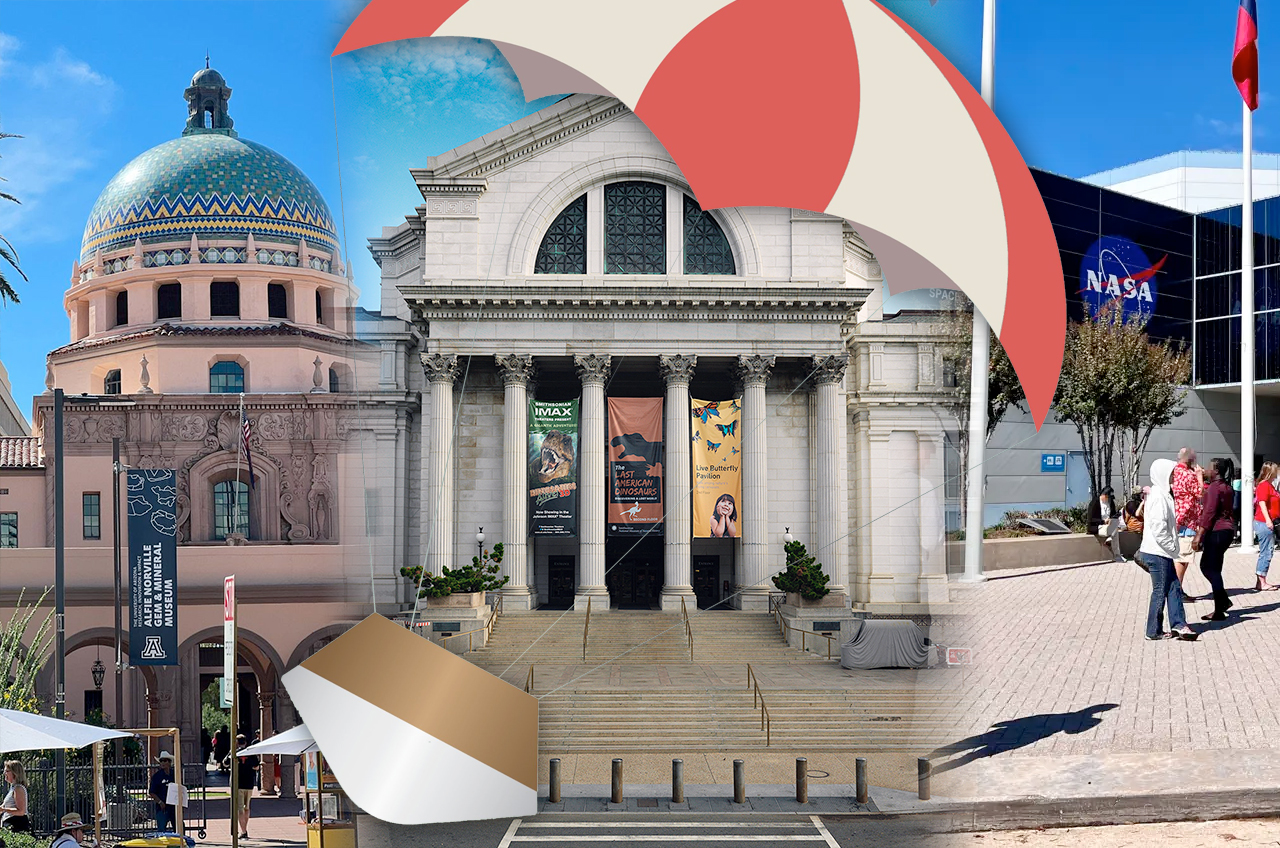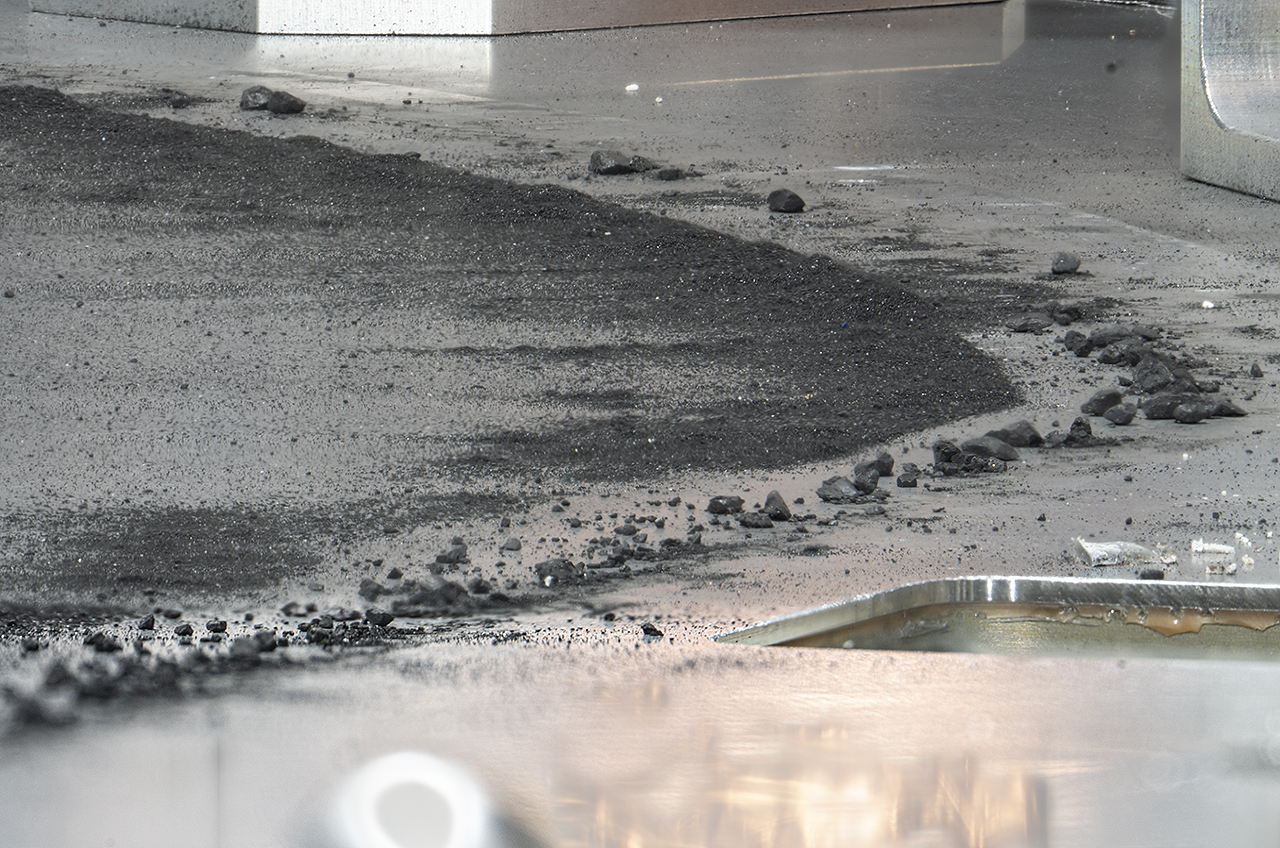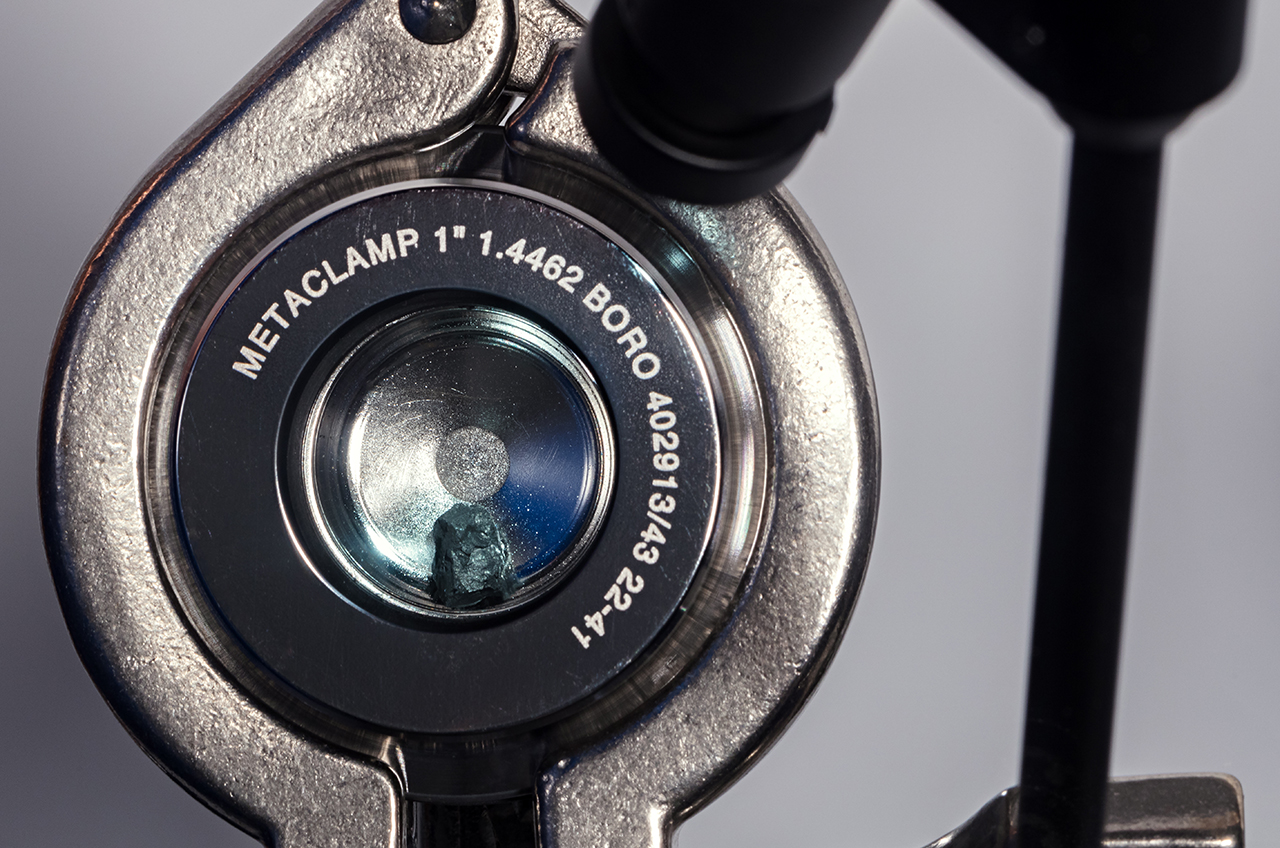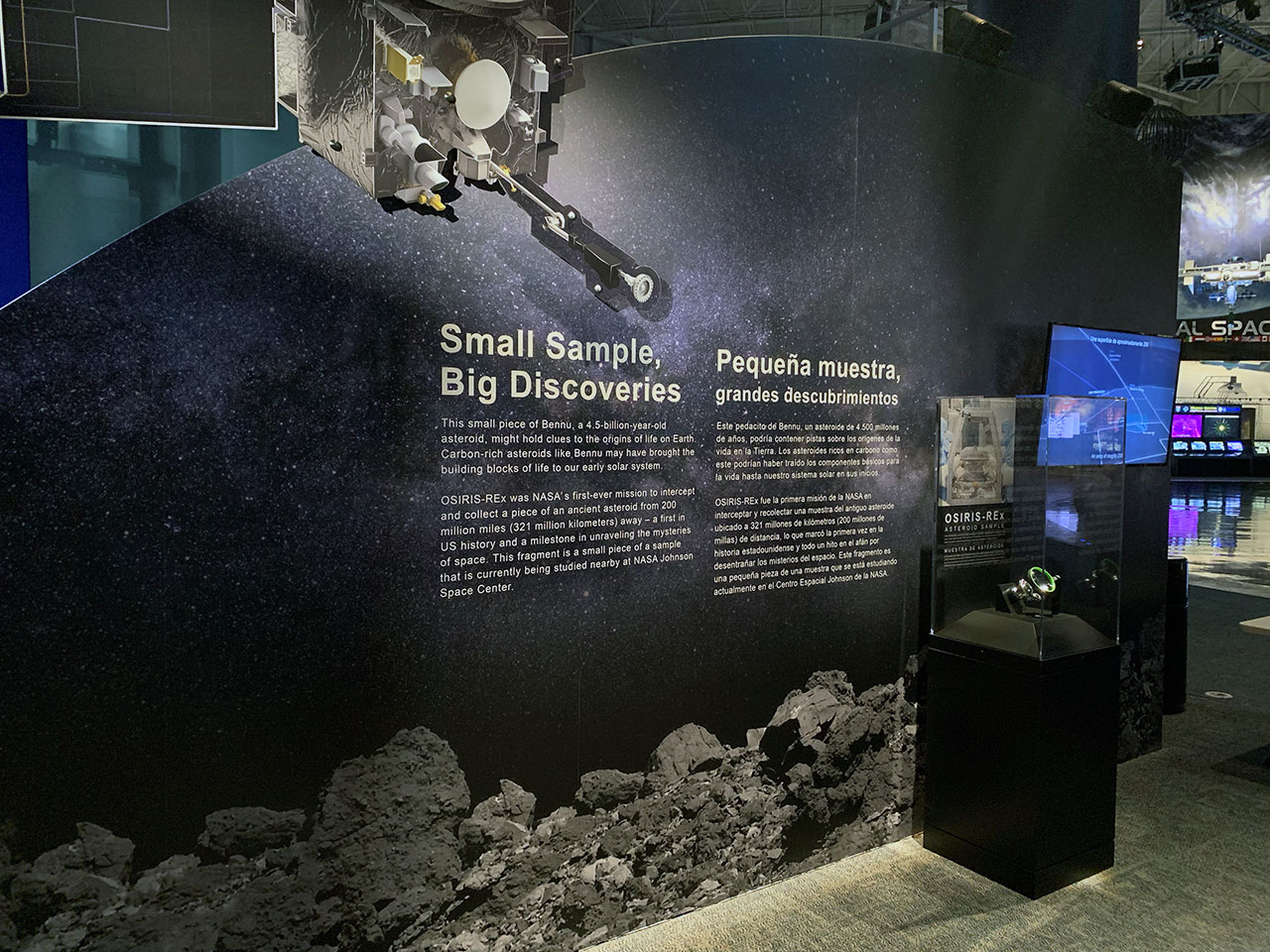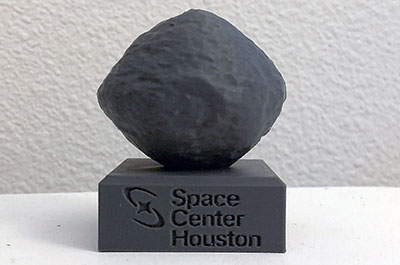A pebble scooped from an asteroid is now on display at UArizona museumThe Alfie Norville Gem & Mineral Museum is now one of only three places in the world where the public can see a piece of the asteroid Bennu, collected during NASA's University of Arizona-led OSIRIS-REx mission.
It might not be the heftiest or flashiest stone on display at the University of Arizona's Alfie Norville Gem & Mineral Museum, but it certainly is its most unique, if not downright alien: a piece from an asteroid in space, brought to Earth by NASA's UArizona-led OSIRIS-REx mission in September.
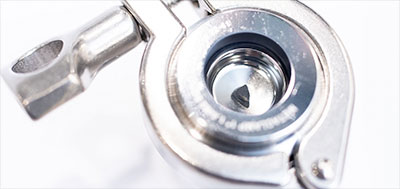
Above: Tucked inside a clear container protected by a metal casing, the pebble collected from asteroid Bennu by the OSIRIS-REx spacecraft is one of only three places in the world to display an extraterrestrial rock sample collected in space, other than the moon. (Chris Richards/University of Arizona)
After seven years in space and over 4 billion miles traveled, it touched down in a remote area of the Utah desert, tucked safely inside a capsule protecting the sample from the harsh conditions in space and the rough ride through Earth's atmosphere.
The museum is one of only three places in the world to display an extraterrestrial rock sample collected in space, other than the moon. The other two samples from asteroid Bennu available for public viewing are at Space Center Houston in Texas and the Smithsonian National Museum of Natural History in Washington, D.C. Sample curation specialists at NASA's Johnson Space Center in Houston carefully selected the specimen suitable for public display, and visitors can check it out as of today.
"What's so special about the Bennu sample is that it was collected directly at the asteroid, in space, and that's something that we really try to help our visitors understand," said the museum's director, Violetta Wolf, explaining that while many are familiar with seeing meteorites on display, it is important to realize that those are very different.
While meteorites come from space, too, by the time they reach the ground, they have been in contact with all sorts of Earthly influences – during their fall, they are exposed to extreme heat, altering their appearance as well as possibly their structure and chemical makeup. Then they smack into the ground, sometimes digging into the soil. By the time they are found and collected, they have been exposed to the air, water, microbes and who knows what.
"To have something that actually has never been in contact with our atmosphere or anything else on our planet, is exceptional and incredibly rare," Wolf said. "We only have two pieces in the museum like that, and that's the lunar sample and now the sample from Bennu."
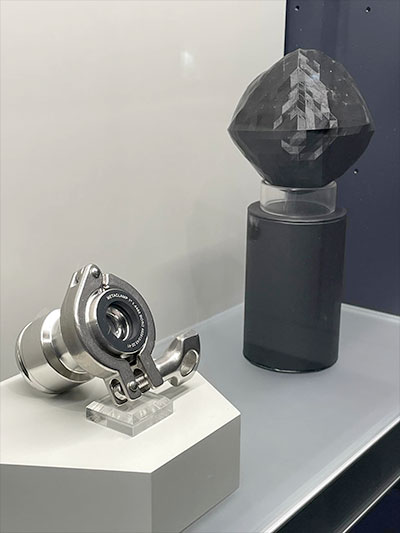
In all, OSIRIS-REx brought 121.6 grams (4.29 ounces) of material to Earth on Sept. 24. Of that amount, UArizona scientists received 200 milligrams (approximately 7 thousandths of an ounce) of asteroid material for scientific study. Initial analyses indicate the samples contain plentiful amounts of water locked up in minerals like clays and are also rich in carbon, nitrogen, sulfur and phosphorus.
Bigger than the sand-size science samples that are currently being analyzed at the university, the specimen that NASA allocated for public display in Tucson is a small, dark pebble with well-defined structure and texture. It will go on display next to a moon rock brought to Earth by astronauts of the Apollo 15 mission.
"It's not huge, of course, but for a sample of this significance, it's actually pretty large," Wolf said, adding that the roughly pinky-nail-size display specimen is actually larger than expected.
"You can actually see it's a small pebble, very dark, almost black," she said. "It almost seems like something that you would shake out your shoe after a long hike. If you look closely, you can see some different textures in it, some different colors."
Educational samples are specifically portioned out to recognize the importance of not just the scientific research, but the potential to inspire and encourage future scientists, Wolf said.
The specimen is tucked inside a clear container held by a metal casing to protect it from mechanical damage. A protective nitrogen atmosphere protects it from being exposure to air and prevents chemical alteration.
"NASA's approach to scientific research is that it has to also benefit the public through interpretation and getting young people excited about careers in science and space-related research and technology," Wolf said. "Putting it in its display case really was a humbling moment – recognizing what just passed through our hands."
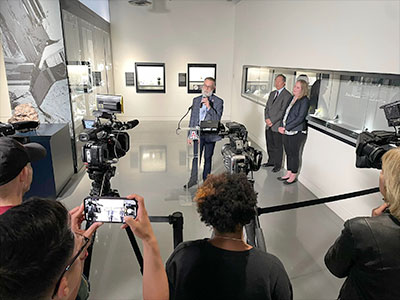
And while that small piece of asteroid Bennu will sit in its case, shielded from Earth's ever-changing environment, its story has only just begun. As OSIRIS-REx scientists are beginning to probe the stuff left over from the formation of the solar system about 4.6 billion years ago, they will make countless discoveries, and with each one, a little bit more will be known about the display sample.
"This is not a 'one and done' kind of exhibit," Wolf said. "We're going to keep adding more information as we learn. Having this on display is a huge milestone, but there's still so much to come."
As new analytic technologies become available and new papers are being published, researchers such as Dante Lauretta, the mission's principal investigator at the UArizona Lunar and Planetary Laboratory, will share those insights with the public, and Wolf and her team already look forward to updating the information on the display to share them with the public.
"Having this asteroid sample on display is a testament to the incredible achievements of the OSIRIS-REx mission and the dedication of the team behind it," Lauretta said. "It's a tangible reminder of humanity's ability to explore the cosmos and unravel the mysteries of our universe."











